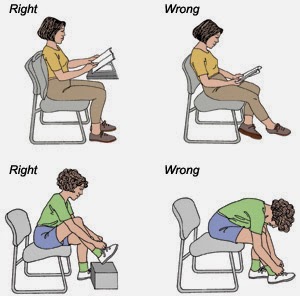You are the best asset!
We go about our daily lives, awaken in the morning after a night’s sleep, get ready for work, stand in the kitchen, sit on a couch or chair, read the paper, go on our blackberry or other type of electronic device, laptops and home work stations, drive/walk/bus to work or school, sit at a desk all day, exercise and then come home make dinner and go to bed.
Do you ever think of how your body is aligned during all of these daily activities? We do! A large portion of patient care at Back to Health Wellness is understanding how you make use of your body during and night the day. We ask that you read on and learn how to be your own investigator and on how you keep your body aligned during the day and at night.
Let us first understand the way in which our bodies work. If you maintain your body in a ‘neutral’ or normal alignment this will have the least amount of force exerted on your body.
This alignment allows the least amount of force or pressure to be placed on the joints, nerves, muscles, ligaments (attach bones to bones) and tendons (attach muscles to bones). Wow, would that not be great for our bodies to allow them to feel good! Often patients do not know how to achieve this. Read on and we will explain how!
Proper Sleeping Techniques
Wow, did you know there is a technique for sleeping? I did not until I went into chiropractic and realized how many people hurt themselves while sleeping! A week does not go by without someone coming in and stating, “Something funny happened in my sleep.” It is not funny when they are in pain.
 |
| drposture.com.au |
Here are some things to think about for ergonomics of sleeping: do not sleep with your arm above shoulder height, do not place it under your pillow (this indicates that your pillow is too low for you), you should sleep on your back or sides and not your stomach (this is very hard on the neck, back, shoulder and knee joints and causes arthritis over time), sleep with your body not twisted, you can use a pillow between your knees when you are on your side and a pillow under your knees when you are on your back, and your arms should be in a relaxed position and the wrists should not be bent.
The age and type of your mattress makes a difference as well. The majority of mattresses only last 10-12 years. When looking for a new mattress look for a medium one that offers support. If you go with a coil mattress ask for the greatest coil count, this gives you the greatest support.
Your pillow is important too! This normally last up to 2 years, if you have a water pillow they normally last 5 years.
Feather pillows are not advised as they do not offer support; people normally fluff them up and the fluffing does not last long once you fall asleep. If you use a feather pillow try a water pillow instead as they are the same type of support system.
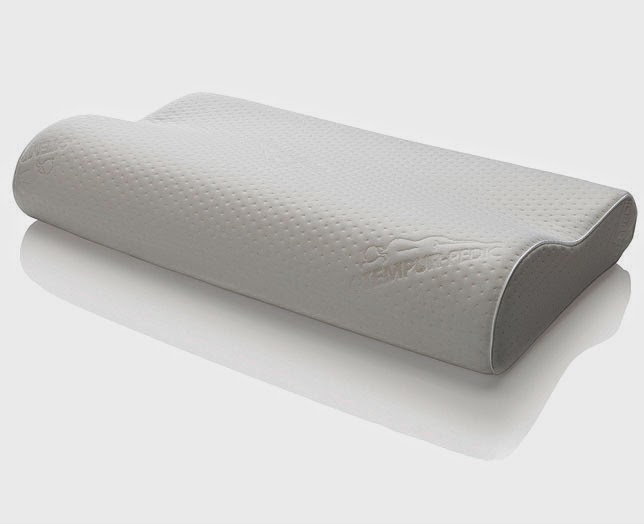 |
| 1800mattress.com |
Back to Health has loaners for pillows if you want to borrow one ask at front reception.
Feet are the foundation for the rest of the body!
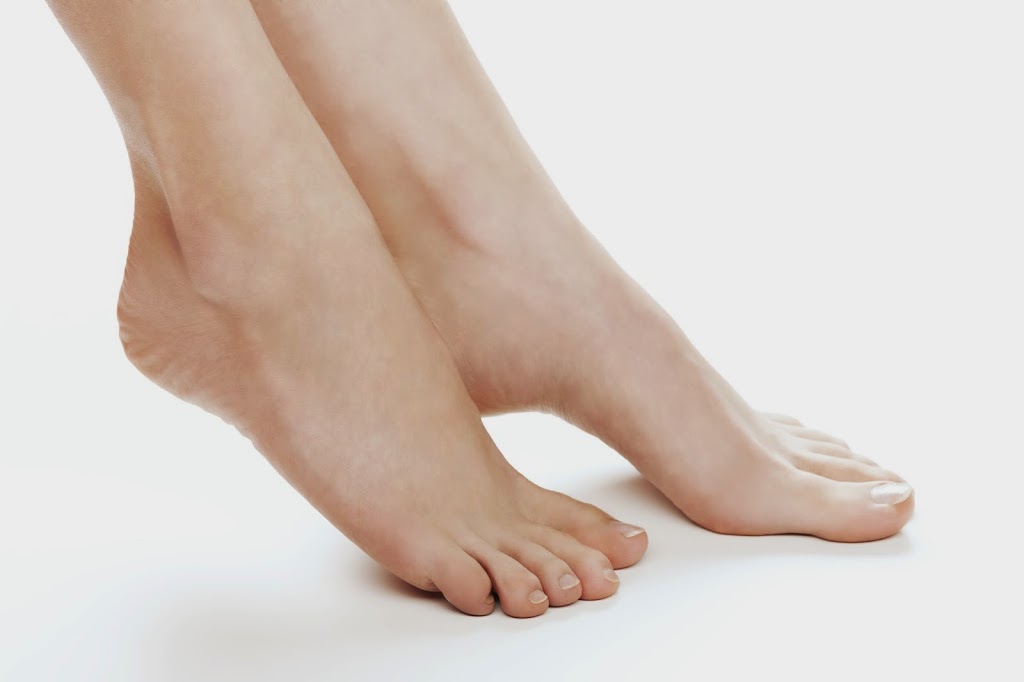 |
| americanfoot.com |
Did you know that the average person walks about 250,000 miles in their lifetime? When a person weighing 165-170 pounds walks an average of 7.5 miles a day they will carry 500 tons a day on each foot! Your feet are remarkable pieces of equipment–they must act as rigid levers to propel the body forward and also act as a shock absorbers during the their initial contact with the ground. Their complex structure allows your feet to perform these functions very well; however, they are obviously subject to tremendous stresses, making them and the other body parts associated with walking the targets for many possible problems.
If the alignment is off at the foundation the rest of the body will be under strain as well. 80% of people over the age of 20 will pronate (inward rotation after heel strike). This can cause strain on the plantar fascia of the feet, knees and even the hips and lower back. This is why we complete a gait analysis with all of our new patients. If the foundation is an issue it needs to be addressed by supporting with orthotics. These can sometimes be off the shelf or custom made.
Proper Lifting & Bending Over Techniques and Proper Work Station Ergonomics
Lifting Techniques:
Never bend your back to pick something up, Hold the object close to your body, Don’t twist or bend, Keep your eyes up, Plan ahead before lifting, Lift close to your body, Feet shoulder width apart, Bend your knees and keep your back straight, Tighten your stomach muscles, Lift with your legs, Do not lift and twist your torso, instead turn your whole body, Wear a belt or back support, get help if the load is too heavy.
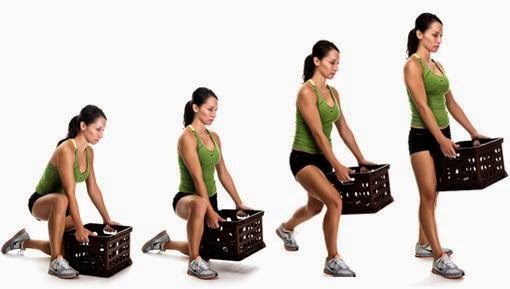 |
| home-health-care-physical-therapy.com |
Ergonomic Techniques:
Have your monitor at eye level (your eyes intersect the middle of the screen), The monitor(s) should be straight ahead of you and not off to the side, Use a keyboard tray, Have your wrists straight and not bent up or down, Rest your wrists, The back of your chair should be slightly tilted back and the seat should be slightly up – as if you are reclining a bit (least amount of pressure on the lower back and hips), Use a foot stool.
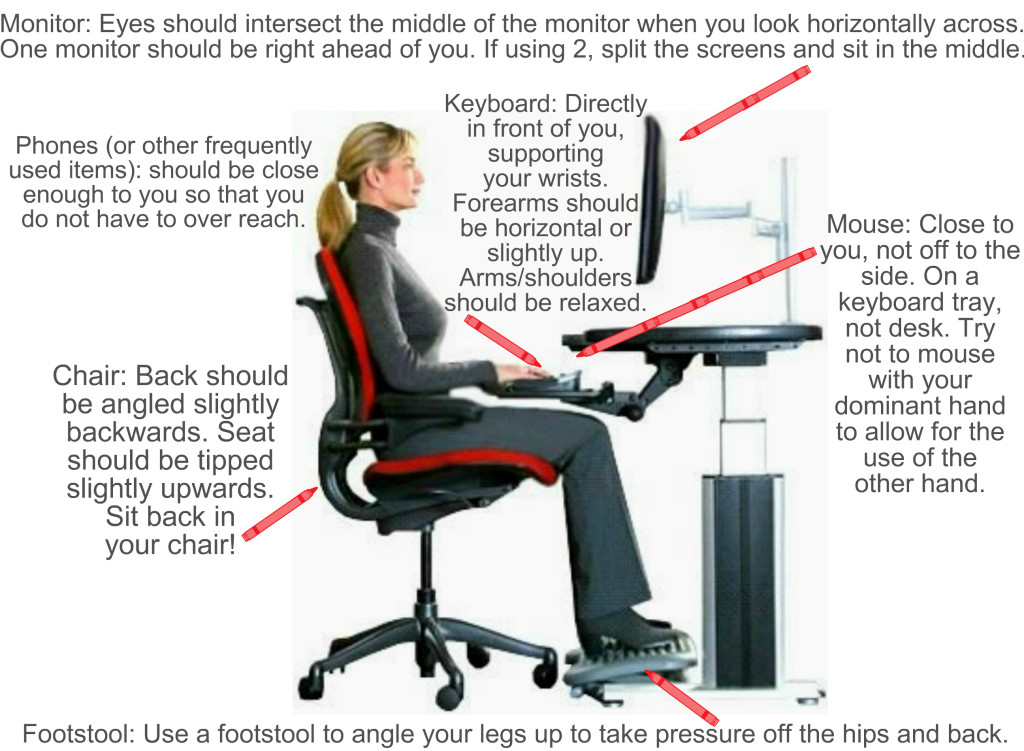
Ergonomic Assessment:
Send pictures to Dr. Barbara Rodwin of yourself at your workstation and she can make recommendations!
Send the following:
Two from the side
One of the top part of you including the monitor, the other of the bottom part of you including your feet.
One from behind
Showing your head and the monitor.

